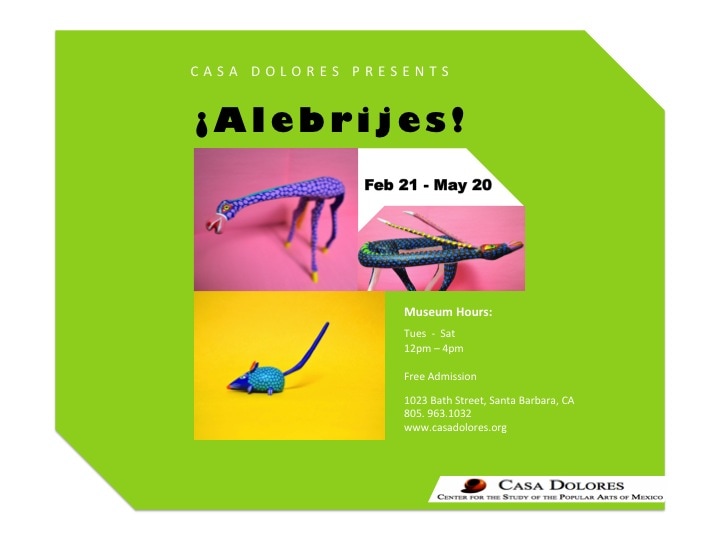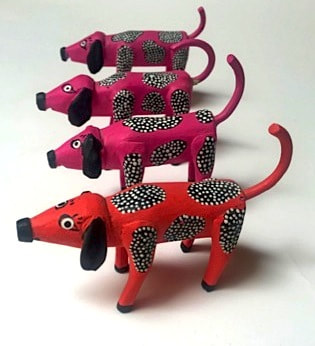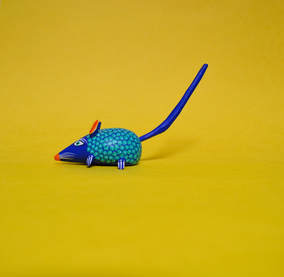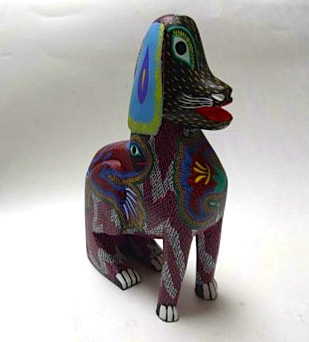- Home
-
Permanent Exhibition
- Bandera Ware
- Bandera Ware
- Spotlight Gallery >
-
Past Exhibitions
>
- Past Exhibitions >
- Native Mexican Garment
- The Joy of Nativity Scenes
- Our Day of the Dead Altar
- Women of Mexican Independence (1810)
- Divine Pitchers/ Jarras Divinas
- Cinco de Mayo display
- Legends of Mexican Cinema photos
- Navidad Mexicana
- Day of the Dead Altar 2021
- Independence Day Display 2021
- Splendors of "The Tree of Life"
- Mexican Independence Day
- Navidad 2020
- Old Postcards from México
- La Catrina from its origins
- OTOMÍ DREAM
- NATIVITY SCENES 2019
- Three Wise Man Celebration
- DAY OF THE DEAD 2019
- Whimsical Tales of Ocumicho
- Mexican Independence Day display 2019
- Lacquers from Uruapan
- Mariachi outfit and its history
- The Popular Mexican Velvet Hat
- Cinco de Mayo -2019
- Green-Glazed Ceramics
- Double Exhibition
- Chistmas Nativities-2018
- Day of the Dead / El Día de Los Muertos 2018
- Patriotic Play: Figures of the Mexican Revolution
- Mexican Independence Day 2018
- Fiesta Display: Traditional Mexican Embroidery
- Traditional Toys
- Cinco de Mayo 2018
- Splendors of Oaxacan Art
- Nacimiento Navideño 2017
- Día De Los Muertos 2017
- Birds of Clay: Burnished Pottery from Jalisco
- ¡Alebrijes! Alebrijes!
- Mystical Masks / Máscaras Místicas
- Nacimiento Navideño/ Nativity Sets & Scenes 2016
- El Día De Los Muertos 2016
- Muñecas Tradicionales / Traditional Dolls
- Barro Petatillo y Petate de Palma
- Dîa de los Muertos 2015
- Bandera Ware/ Flag Ware
- Past Events
- Saintly and Spirited: Art Made of Tin
- ¡LOTERÍA! Mexico's Game of Chance and Poetry
- Tree of Life / El Arbol de la Vida
- Mexico Dreams Animals
- A Photographic Stroll
- Transportation ¡DALE!
- ¡Buen Provecho! Dining in Mexico
- Get Involved
- Links
- Collections
- Upcoming exhibition
Alebrijes!
The Alebrijes are brightly colored Mexican folk art of fantastical creatures. Pedro Linares (1906-1992) first used the term to describe his papier-mâché creation in 1936 in Mexico City; it is also now commonly used in reference to the Oaxacan woodcarving figures popularized by Manuel Jiménez. The Origin of Alebrijes: Pedro Linares was inspired by a dream when he fell ill at age 30, in which he saw strange animals with horns, wings, tails, fierce teeth, and bulgy eyes. His elaborate decorative pieces represent imaginary creatures he called alebrijes. |
¡Alebrijes!
Los Alebrijes son creaturas fantásticas de colores llamativos que forman parte del arte popular Mexicano. Pedro Linares (1906-1992) usó el termino para describir sus creaciones de papel maché en 1936 in la Ciudad de Mexico; éste se usa comúnmente para dirigirse a las figuras de madera Oaxaqueñas de Manuel Jiménez. Origen de los Alebrijes: La inspiración de Pedro Linares nació de un sueño que tubo durante un tiempo que estuvo enfermo cuando tenia 30 años, en el cual vió animales extraños con cuernos, alas, colas, dientes feroces y ojos abultados. Sus piezas decorativas y complicadas representan creaturas imaginarias, que él llamó alebrijes. |
Alebrjies:
These fantastical and colorful creatures, known as alebrijes, sprang from the mind of Pedro Linares while he endured the throes of a feverish delirium around 1936. His visions of bizarre and sometimes terrifying creatures inspired him to recreate them when he “returned to this side of death”. Linares dreamt of a strange place resembling a forest and suddenly, rocks, clouds, and animals turned strange, and odd animals appeared- a donkey with butterfly wings, and a rooster with bullhorns. All of them were shouting just one word: “Alebrijes!” The word has no meaning in any language, but it was etched in Linares memory, along with visions of strange animals.
Already well known as a papier-mâché artist, Linares shared his dream creatures through his art, and a new Linares family tradition began. The Linares family customarily built holiday and ritual masks, toys, and other figures out of papier-mâché, including giant Judases to be ritually burned during Semana Santa, Holy Week.
Pedro Linares, trained in these techniques, focused his skills on bringing his dream creatures to life. His alebrijes crossed the bridge between folk art and fine art, bringing international renown to not only the Linares family, but also the practice of making alebrijes. Pedro received the National Arts and Science award in the Popular and Traditional Arts category, the highest decoration granted to artisans by the Mexican government. In 1990, two years after receiving this coveted prize, Pedro died at the age of 86. His sons and grandsons continue to carry on and expand his legacy into the twenty-first century.
These fantastical and colorful creatures, known as alebrijes, sprang from the mind of Pedro Linares while he endured the throes of a feverish delirium around 1936. His visions of bizarre and sometimes terrifying creatures inspired him to recreate them when he “returned to this side of death”. Linares dreamt of a strange place resembling a forest and suddenly, rocks, clouds, and animals turned strange, and odd animals appeared- a donkey with butterfly wings, and a rooster with bullhorns. All of them were shouting just one word: “Alebrijes!” The word has no meaning in any language, but it was etched in Linares memory, along with visions of strange animals.
Already well known as a papier-mâché artist, Linares shared his dream creatures through his art, and a new Linares family tradition began. The Linares family customarily built holiday and ritual masks, toys, and other figures out of papier-mâché, including giant Judases to be ritually burned during Semana Santa, Holy Week.
Pedro Linares, trained in these techniques, focused his skills on bringing his dream creatures to life. His alebrijes crossed the bridge between folk art and fine art, bringing international renown to not only the Linares family, but also the practice of making alebrijes. Pedro received the National Arts and Science award in the Popular and Traditional Arts category, the highest decoration granted to artisans by the Mexican government. In 1990, two years after receiving this coveted prize, Pedro died at the age of 86. His sons and grandsons continue to carry on and expand his legacy into the twenty-first century.
Alebrijes:
Estas criaturas fantásticas y coloridas, conocido como alebrijes, surgieron de la mente de Pedro Linares mientras que soportaba un delirio febril cerca del año 1936. Sus visiones de criaturas extrañas y a veces aterradora le inspiraban a crearlos en cartonería cuando “volvió a este lado de la muerte”. Linares soñó de un lugar extraño que parecía como un bosque, donde de repente piedras, nubes y animales se volvieron extrañas, y animales aparecieron mezcladas- un burro con las alas de mariposa, o un gallo con cuernos de toro. Todos estos animales estaban gritando solamente una palabra: “¡Alebrijes!” Y cada animal estaba gritando cada vez más fuerte: “¡Alebrijes! ¡Alebrijes! ¡Alebrijes!” La palabra no significa nada en ningún idioma, pero fue grabado en la memoria de Linares, junto con visiones de los animales extraños.
Ya bien conocido como artista de cartonería, Linares compartió sus animales de sueño y nació una tradición nueva por la familia Linares. Que ellos habitualmente se construyian máscaras rituales para fiestas, juguetes, y otras figuras de papel-mâché, como figuras gigantes de Judas para la quema ritual durante Semana Santa.
Pedro Linares, quien fue entrenado en estas técnicas, enfocando sus habilidades con lo que dio vida a sus criaturas de sus sueños. Sus alebrjies cruzaron el puente entre los arte popular y las bellas artes, trayendo fama no solamente a la familia Linares, pero también el arte de hacer alebrijes. Pedro recibió El Premio de Las Artes y Ciencias en la categoría de Artes Popular y Tradicional; la más alta condecoración que un artista puede recibir del gobierno Mexicano. En 1990, dos años despues de recibir este premio codiciado, Pedro murió a la edad de 86. Sus hijos y nietos continuan con su arte y su legado en el siglo vigésimo primero.
Estas criaturas fantásticas y coloridas, conocido como alebrijes, surgieron de la mente de Pedro Linares mientras que soportaba un delirio febril cerca del año 1936. Sus visiones de criaturas extrañas y a veces aterradora le inspiraban a crearlos en cartonería cuando “volvió a este lado de la muerte”. Linares soñó de un lugar extraño que parecía como un bosque, donde de repente piedras, nubes y animales se volvieron extrañas, y animales aparecieron mezcladas- un burro con las alas de mariposa, o un gallo con cuernos de toro. Todos estos animales estaban gritando solamente una palabra: “¡Alebrijes!” Y cada animal estaba gritando cada vez más fuerte: “¡Alebrijes! ¡Alebrijes! ¡Alebrijes!” La palabra no significa nada en ningún idioma, pero fue grabado en la memoria de Linares, junto con visiones de los animales extraños.
Ya bien conocido como artista de cartonería, Linares compartió sus animales de sueño y nació una tradición nueva por la familia Linares. Que ellos habitualmente se construyian máscaras rituales para fiestas, juguetes, y otras figuras de papel-mâché, como figuras gigantes de Judas para la quema ritual durante Semana Santa.
Pedro Linares, quien fue entrenado en estas técnicas, enfocando sus habilidades con lo que dio vida a sus criaturas de sus sueños. Sus alebrjies cruzaron el puente entre los arte popular y las bellas artes, trayendo fama no solamente a la familia Linares, pero también el arte de hacer alebrijes. Pedro recibió El Premio de Las Artes y Ciencias en la categoría de Artes Popular y Tradicional; la más alta condecoración que un artista puede recibir del gobierno Mexicano. En 1990, dos años despues de recibir este premio codiciado, Pedro murió a la edad de 86. Sus hijos y nietos continuan con su arte y su legado en el siglo vigésimo primero.
The Evolution of Alebrijes:
Although alebrijes are synonymous with the Linares name, they have become such a large part of Mexican culture and art that their creation has spread to other places, (most notably the state of Oaxaca), and other media. Using wood from copal trees native to the region, artisans in the small Oaxacan towns of San Martin Tilcajete, La Union, and Arrazola, among others, carve and paint elaborate creatures that now sell for hundreds of dollars in the international market.
The artisans claim inspiration from sources as diverse as real animals to exotic images from magazines, as well as the unique workings of their own imaginations. Oaxacan woodcarving thrives as a family affair- more often than not, multiple family members take part in the creative process. The very young and the very old sand the piece, the men are entrusted with carving the wood, the women paint it, and everyone influences the final product. As prominent Oaxacan carver Joaquin Hernandez Vasquez says of his own children, leaning the art and continuing the family’s work “is in their blood”.
Although alebrijes are synonymous with the Linares name, they have become such a large part of Mexican culture and art that their creation has spread to other places, (most notably the state of Oaxaca), and other media. Using wood from copal trees native to the region, artisans in the small Oaxacan towns of San Martin Tilcajete, La Union, and Arrazola, among others, carve and paint elaborate creatures that now sell for hundreds of dollars in the international market.
The artisans claim inspiration from sources as diverse as real animals to exotic images from magazines, as well as the unique workings of their own imaginations. Oaxacan woodcarving thrives as a family affair- more often than not, multiple family members take part in the creative process. The very young and the very old sand the piece, the men are entrusted with carving the wood, the women paint it, and everyone influences the final product. As prominent Oaxacan carver Joaquin Hernandez Vasquez says of his own children, leaning the art and continuing the family’s work “is in their blood”.
La Evolución de Alebrijes:
Aunque “Alebrijes” es sinónimo con el nombre Linares, estas criaturas se han convertido en una parte tan importante de la cultura y el arte Mexicano que su creación se ha extendido a otros lugares, más notablemente el estado de Oaxaca. Usando otro medio- la madera de los arboles de copal que son nativos de la region, artesanos en los ciudades pequeñas de San Martin Tilcajete, La Unión y Arrazola, entre otros, tallan y pintan criaturas elaboradas que se venden por cientos de dólares en el Mercado internacional.
Los artesanos reclaman la inspiración de fuentes tan diversos como animales reales hasta imagenes exóticas, así como sus propias imaginaciónes. La talla de madera Oaxaqueña prospera como un asunto de familia- más a menudo que no, varios miembros de la familia participan en el proceso creativo. Los muy jóvenes y los muy viejos lijan los pedazos; a los hombres se encargan de tallar la madera; a las mujeres, pintarla; y todos ejercen influencia sobre el producto final. Como dice Joaquin Hernandez Vasquez, conocido tallador de madera, de sus niños propios, enseñando el arte y continuando el trabajo de la familia “está en su sangre”.
Aunque “Alebrijes” es sinónimo con el nombre Linares, estas criaturas se han convertido en una parte tan importante de la cultura y el arte Mexicano que su creación se ha extendido a otros lugares, más notablemente el estado de Oaxaca. Usando otro medio- la madera de los arboles de copal que son nativos de la region, artesanos en los ciudades pequeñas de San Martin Tilcajete, La Unión y Arrazola, entre otros, tallan y pintan criaturas elaboradas que se venden por cientos de dólares en el Mercado internacional.
Los artesanos reclaman la inspiración de fuentes tan diversos como animales reales hasta imagenes exóticas, así como sus propias imaginaciónes. La talla de madera Oaxaqueña prospera como un asunto de familia- más a menudo que no, varios miembros de la familia participan en el proceso creativo. Los muy jóvenes y los muy viejos lijan los pedazos; a los hombres se encargan de tallar la madera; a las mujeres, pintarla; y todos ejercen influencia sobre el producto final. Como dice Joaquin Hernandez Vasquez, conocido tallador de madera, de sus niños propios, enseñando el arte y continuando el trabajo de la familia “está en su sangre”.
|
Copyright © 2018 Casa Dolores - All rights reserved.
|
- Home
-
Permanent Exhibition
- Bandera Ware
- Bandera Ware
- Spotlight Gallery >
-
Past Exhibitions
>
- Past Exhibitions >
- Native Mexican Garment
- The Joy of Nativity Scenes
- Our Day of the Dead Altar
- Women of Mexican Independence (1810)
- Divine Pitchers/ Jarras Divinas
- Cinco de Mayo display
- Legends of Mexican Cinema photos
- Navidad Mexicana
- Day of the Dead Altar 2021
- Independence Day Display 2021
- Splendors of "The Tree of Life"
- Mexican Independence Day
- Navidad 2020
- Old Postcards from México
- La Catrina from its origins
- OTOMÍ DREAM
- NATIVITY SCENES 2019
- Three Wise Man Celebration
- DAY OF THE DEAD 2019
- Whimsical Tales of Ocumicho
- Mexican Independence Day display 2019
- Lacquers from Uruapan
- Mariachi outfit and its history
- The Popular Mexican Velvet Hat
- Cinco de Mayo -2019
- Green-Glazed Ceramics
- Double Exhibition
- Chistmas Nativities-2018
- Day of the Dead / El Día de Los Muertos 2018
- Patriotic Play: Figures of the Mexican Revolution
- Mexican Independence Day 2018
- Fiesta Display: Traditional Mexican Embroidery
- Traditional Toys
- Cinco de Mayo 2018
- Splendors of Oaxacan Art
- Nacimiento Navideño 2017
- Día De Los Muertos 2017
- Birds of Clay: Burnished Pottery from Jalisco
- ¡Alebrijes! Alebrijes!
- Mystical Masks / Máscaras Místicas
- Nacimiento Navideño/ Nativity Sets & Scenes 2016
- El Día De Los Muertos 2016
- Muñecas Tradicionales / Traditional Dolls
- Barro Petatillo y Petate de Palma
- Dîa de los Muertos 2015
- Bandera Ware/ Flag Ware
- Past Events
- Saintly and Spirited: Art Made of Tin
- ¡LOTERÍA! Mexico's Game of Chance and Poetry
- Tree of Life / El Arbol de la Vida
- Mexico Dreams Animals
- A Photographic Stroll
- Transportation ¡DALE!
- ¡Buen Provecho! Dining in Mexico
- Get Involved
- Links
- Collections
- Upcoming exhibition




